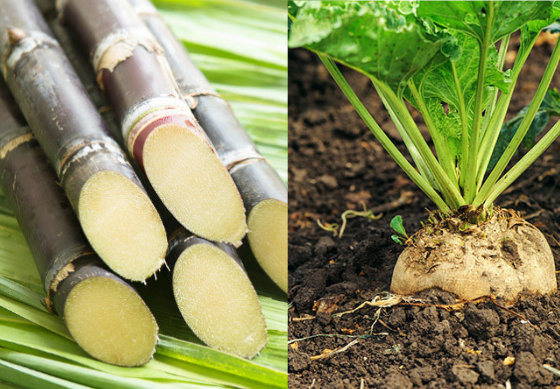In discussions of beet sugar vs cane sugar, the source of the sugar plays a important role in its properties.
In discussions of beet sugar vs cane sugar, the source of the sugar plays a important role in its properties.
Blog Article
Discover the Uses and Benefits of Beet Sugar Vs Cane Sugar in Your Daily Diet
Discovering the distinctive high qualities of beet and cane sugar reveals even more than just their sweetening capabilities; it highlights their distinct influence on health and cookeries. Beet sugar, known for its subtle taste, is often preferred in fragile treats, whereas cane sugar, with its tip of molasses, includes splendor to robust dishes. Each type holds its very own dietary account and glycemic effects, welcoming a much deeper understanding of their functions in a balanced diet and sustainable consumption practices.
Origin and Production Processes of Beet and Cane Sugar

The unique climates and dirt types needed for growing sugar beetroots and sugarcane add to differences in their cultivation techniques and geographic circulation, affecting the business economics and sustainability of their manufacturing. beet sugar vs cane sugar.
Nutritional Comparison Between Beet Sugar and Cane Sugar
Regardless of stemming from different plants, beet sugar and cane sugar are nutritionally extremely similar, both largely including sucrose. Each offers concerning 4 calories per gram, converting to about 16 calories per tsp. Structurally, both sugars are made up of roughly 99.95% sucrose, with very little amounts of other compounds like wetness and trace minerals, which do not significantly change their dietary accounts.

Ultimately, when picking in between beet sugar and resource cane sugar based on dietary content alone, both offer similar benefits and drawbacks as they are basically kinds of the very same particle-- sucrose, giving fast power without various other nutrients.
Influence On Health And Wellness: Glycemic Index and Caloric Content
Discovering further right into the effects of beet sugar and cane sugar on wellness, it is vital to consider their glycemic index and calorie content. The glycemic index (GI) of both beet and cane sugar is around 65, classifying them as high-GI foods, which can trigger fast spikes in blood glucose degrees.
Each sort of sugar contains about 4 calories per gram, making their learn the facts here now calorie web content equivalent. For those keeping an eye on caloric intake, especially when managing weight or metabolic health conditions, recognizing this equivalence is important (beet sugar vs cane sugar). However, extreme intake of any kind of high-calorie, high-GI food can contribute to wellness concerns such as weight problems, heart problem, and insulin resistance.
Environmental and Economic Considerations of Sugar Production
Beyond wellness impacts, the production of beet and cane sugar additionally increases significant ecological and economic concerns. Sugar beet growing often tends to call for cooler environments and has a lower geographical footprint compared to sugar cane, which grows in tropical regions. However, both plants are extensive in regards to water use and land line of work, possibly causing deforestation and water shortage. Financially, the worldwide sugar market is highly unpredictable, influenced by modifications in worldwide profession plans and aids. Numerous nations incentivize sugar production via financial assistance, skewing market value and influencing small-scale farmers adversely.
In addition, making use of chemicals and plant foods in both beet and cane sugar growing can lead to dirt degradation and pollution, further impacting biodiversity and neighborhood water bodies (beet sugar vs cane sugar). The choice between cultivating sugar beet or cane commonly depends upon local environmental problems and economic variables, making the sustainability of sugar production an intricate concern
Culinary Applications and Flavor Differences
While the environmental and financial elements of sugar production are undoubtedly considerable, the option in between beet and cane sugar also basics influences culinary applications and flavor profiles. Beet sugar, derived from the sugar beet plant, is known for its remarkably neutral preference.
Walking stick sugar, removed from sugarcane, commonly retains molasses traces, which impart an unique richness and depth. This mild molasses flavor boosts the intricacy of baked goods, sauces, and sauces. It is especially preferred in things where a sugar touch is preferred, such as in brownies or gingerbread. Additionally, the mild variation in moisture content between beet and cane sugar can influence the appearance and consistency of dishes, making cane sugar a favored choice for specific dishes that take advantage of its unique buildings.

Final Thought
In verdict, both beet and cane sugar have distinct origins and production procedures, providing comparable nutritional profiles with mild distinctions in sodium material and taste. While their impact on wellness, particularly regarding glycemic index and calories, is equivalent, the choice in between them typically steams down to ecological, economic aspects, and certain culinary needs. Comprehending these elements can assist customers in making educated choices that line up with their health goals and flavor choices.
Report this page